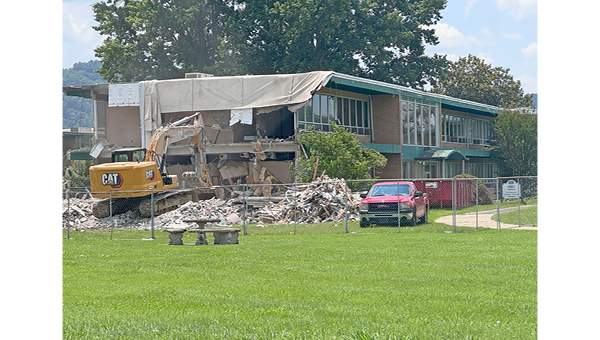The rise and fall of Tennessee’s ‘lost county’
Published 9:41 am Tuesday, March 14, 2023


|
Getting your Trinity Audio player ready...
|
Tennessee has 95 counties, and there used to be a 96th. Known as James County, it was a tiny sliver of a county east of Hamilton and west of Bradley. Formed after the Civil War, it was done away with shortly after World War I.
The story of the rise and fall of James County starts with the larger county to the west of it.
You see, Chattanooga was not the original county seat of Hamilton County. Its original courthouse was in Dallas, on the west side of the Tennessee River and close to the middle of the county. (Yes, that’s right – there was a Dallas, Tenn., before there was a Dallas, Texas!)
Trending
In 1839, after the Cherokee Indians were forced out of Tennessee, real estate developers created a new town across the river from Dallas, on land that had previously been the plantation of Cherokee chief Joseph Vann. Promoters hoped Vannville would become the terminus of two important railroads in the works at the time — one coming up from Georgia, the other down from Nashville.
Things went well at first. As people began moving into the new community, the town was renamed for William Henry Harrison, who was elected president in 1840. Sure enough, Hamilton County moved its county seat from Dallas to Harrison. However – as I pointed out in a column a few months ago – engineer Stephen Harriman Long chose Chattanooga rather than Harrison as the destination for the Western and Atlantic Railroad.
In the 1850s, the riverside community of Harrison had a courthouse, jail, ferry, two hotels, three churches, an academy, a newspaper, but no railroad. Chattanooga, meanwhile, had rail connections to Nashville, Charleston and Memphis. Chattanooga grew much faster than Harrison and rose more in stature when tens of thousands of U.S. and Confederate soldiers fought over it during the Civil War. In 1870, the voters of Hamilton County moved the county seat to Chattanooga.
County seats have been moved many times in Tennessee history. But the voters of eastern Hamilton County were especially bitter about the Hamilton County courthouse being moved to Chattanooga. However, to be fair, the geography of Hamilton County is varied and challenging. I’m not sure if anyone could have found a place to put the courthouse that would have pleased everyone.
The citizens of eastern Hamilton County petitioned the General Assembly to form a county. In January 1871, the state legislature passed, and Governor Dewitt Senter signed, an act that did just that. After the citizens of the area approved the change by a vote of 594 to 17, the county was named James County after the Reverend Jesse James, a Methodist minister and civic leader (who was unrelated to the famous outlaw).
Then came the setback that would eventually doom James County. Only three months after it was formed, residents of the new county voted to place its county seat in Ooltewah, a stop on the Southern Railway southeast of Harrison. This heavily contested election divided James County politically and eventually led to Harrison re-joining Hamilton County (in 1893).
Trending
By the beginning of the 20th century, James County was long and skinny – about 30 miles from north to south and only about 5 miles from east to west. It had three small towns – Ooltewah, Apison and Birchwood – and very little in the way of industry and commerce. The county had a woefully small tax base and was known as “Little Jim” to residents of southeast Tennessee.
A 1983 book by the late Polly Donnelly called James County: A Lost County of Tennessee, contains wonderful detail about the history of James County. James County had bad roads and too many small public schools to operate efficiently. On top of everything else, its courthouse burned twice – in 1890 and 1913. These fires not only burdened the residents with the cost of building new courthouses, but they destroyed most of the records that exist from James County.
In December 1919, residents of James County voted 953 to 78 to abolish their county and be annexed into Hamilton County. Shortly thereafter, James County’s records and bond debt were transferred to the Hamilton County Courthouse.
Today the old courthouse in Ooltewah is a special events venue called the Mountain Oaks Manor.
(Bill Carey is the founder of Tennessee History for Kids, a non-profit organization that helps teachers cover social studies.)







